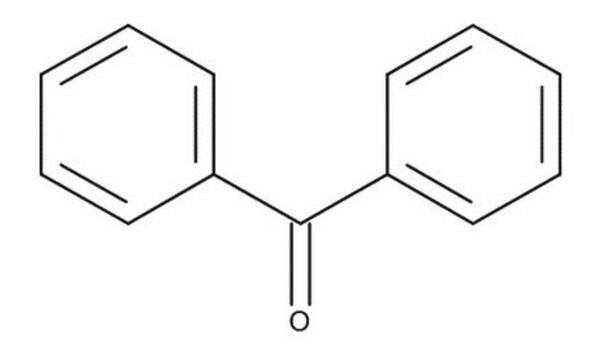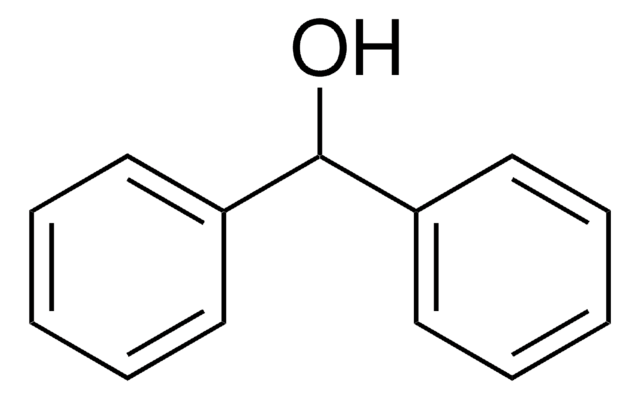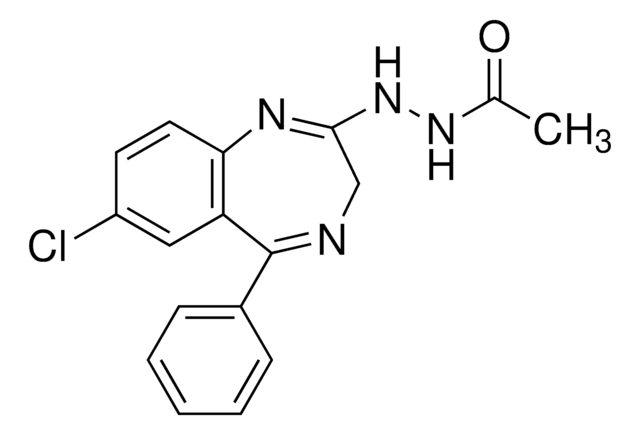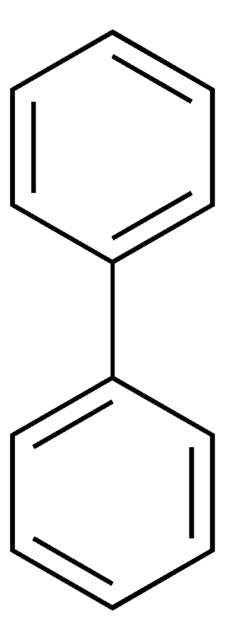Kluczowe dokumenty
Y0000647
Benzophenone
European Pharmacopoeia (EP) Reference Standard
Synonim(y):
Diphenyl ketone, Diphenylmethanone, NSC 8077
About This Item
Polecane produkty
klasa czystości
pharmaceutical primary standard
agency
EP Reference Standard
ciśnienie pary
1 mmHg ( 108 °C)
rodzina API
benzophenone
producent / nazwa handlowa
EDQM
bp
305 °C (lit.)
mp
47-51 °C (lit.)
Zastosowanie
pharmaceutical (small molecule)
Format
neat
temp. przechowywania
2-8°C
ciąg SMILES
O=C(C1=CC=CC=C1)C2=CC=CC=C2
InChI
1S/C13H10O/c14-13(11-7-3-1-4-8-11)12-9-5-2-6-10-12/h1-10H
Klucz InChI
RWCCWEUUXYIKHB-UHFFFAOYSA-N
Szukasz podobnych produktów? Odwiedź Przewodnik dotyczący porównywania produktów
Opis ogólny
Zastosowanie
Opakowanie
Inne uwagi
produkt powiązany
Hasło ostrzegawcze
Danger
Zwroty wskazujące rodzaj zagrożenia
Zwroty wskazujące środki ostrożności
Klasyfikacja zagrożeń
Aquatic Chronic 3 - Carc. 1B - STOT RE 2 Oral
Organy docelowe
Liver,Kidney
Kod klasy składowania
6.1C - Combustible acute toxic Cat.3 / toxic compounds or compounds which causing chronic effects
Klasa zagrożenia wodnego (WGK)
WGK 1
Temperatura zapłonu (°F)
280.4 °F - closed cup
Temperatura zapłonu (°C)
138 °C - closed cup
Wykazy regulacyjne
Wykazy regulacyjne dotyczą głównie produktów chemicznych. Można w nich podawać ograniczoną liczbę informacji na temat produktów niechemicznych. Brak wpisu oznacza, że żaden ze składników nie znajduje się w wykazie. Użytkownik odpowiada za zagwarantowanie bezpiecznego i zgodnego z prawem stosowania produktu.
EU REACH Annex XVII (Restriction List)
Wybierz jedną z najnowszych wersji:
Certyfikaty analizy (CoA)
It looks like we've run into a problem, but you can still download Certificates of Analysis from our Dokumenty section.
Proszę o kontakt, jeśli potrzebna jest pomoc Obsługa Klienta
Masz już ten produkt?
Dokumenty związane z niedawno zakupionymi produktami zostały zamieszczone w Bibliotece dokumentów.
Klienci oglądali również te produkty
Nasz zespół naukowców ma doświadczenie we wszystkich obszarach badań, w tym w naukach przyrodniczych, materiałoznawstwie, syntezie chemicznej, chromatografii, analityce i wielu innych dziedzinach.
Skontaktuj się z zespołem ds. pomocy technicznej









